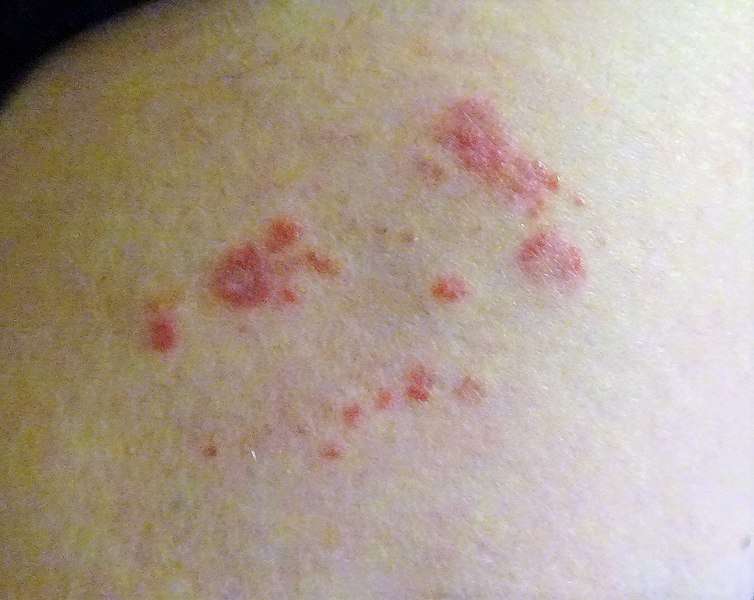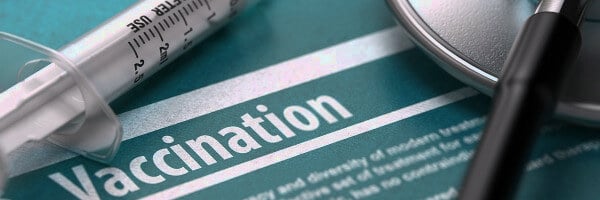Very friendly, informative, and well versed. Felt well taken care of by the doctor and all the staff. Fast, friendly, considerate, all staff met.
Read More
Shingles: What it is, Symptoms, and How to Prevent It
Posted: Aug 27th, 2021 at 12:46PM

Shingles, also known as herpes zoster, is an infection caused by the varicella-zoster virus (VZV), the same virus that causes chickenpox. If you've had chickenpox, the virus remains inactive in the nerve tissues near your spinal cord and brain. It can then reactivate into shingles after a few years.
Shingles affects a single nerve ganglion near the spinal cord, known as the dorsal root ganglion, and the skin surface of that nerve. This viral infection is characterized by a strip of blisters, which appear anywhere in the body but are commonly wrapped around one side of the face, neck, or torso. For others, it can also be a red skin rash that causes burning pain.
Though shingles is not a life-threatening illness, it can get extremely uncomfortable and painful. Fortunately, early treatment can minimize its complications. Plus, there are vaccines that can help reduce the risk of you acquiring and transmitting the virus.
Signs and Symptoms of Shingles
The primary sign of shingles is pain in one specific area of the body instead of all over. Common pain locations include the abdomen, back, chest, and waist.
Depending on the pain location, individuals sometimes mistake their symptoms for problems with the heart, kidney, or lungs. Some experience shingles pain without having a rash. Others who develop a rash start with a strip of blisters (similar to chickenpox) around one side of the torso, one eye, or one side of the face or neck.
The most common symptoms of shingles include:
- Fluid-filled blisters that develop with the rash.
- Itching.
- Pain, numbness, burning, or a tingling sensation.
- Sensitivity to light and touch.
For more serious cases, symptoms include:
- Chills.
- Fatigue.
- Fever.
- Headache.
- Muscle weakness.
- Upset stomach.
In even more rare and severe presentations, signs of shingles can be:
- Bacterial infections that affect the internal organs.
- Dizziness.
- Eye problems (pain, swelling, and temporary loss of vision).
- Facial tenderness.
- Hearing loss.
- Loss of taste.
- Pain in the mouth or teeth.
In general, shingles lasts around two to four weeks. It can be contagious to anyone that has not experienced chickenpox until the blisters dry up. Most people only experience shingles once in their life, but it can recur for others.
Who is at Risk?
Anyone can acquire chickenpox which can later develop into shingles. In fact, the Centers for Disease Control and Prevention (CDC) notes that one in three people in the U.S have shingles in their lifetime.
There are also several factors that can increase one's risk of developing shingles. These include:
- Age – The risk increases for people older than 50 years old.
- Having a weakened immune system – Individuals with certain diseases, such as HIV/AIDs and cancer, as well as those undergoing an organ transplant, are more likely to acquire shingles.
- Undergoing cancer treatments – Chemotherapy, radiation, and medications that suppress your immune system can lower your resistance and increase your vulnerability to the infection.
- Taking certain medications – Some drugs that prevent rejection of transplanted organs as well as prolonged use of steroids can increase one's risk of developing shingles.
It's important to note that you can only develop shingles if you've had chickenpox or have been exposed to the virus that causes it (even if it has been dormant for years).
Transmission
Shingles itself is not contagious. However, the virus that causes it can be transmitted to someone who hasn't had chickenpox yet, and this can develop into shingles.
This means you can't get shingles from someone who has shingles, but you can get chickenpox if you've never had it or never received the vaccine for it.
In the same way, if you have shingles, direct contact with the fluid from your blisters can spread the virus to others. If they get infected, they develop chickenpox, which could become shingles later in their life.
The risk of transmitting the VZV is low if the shingles rash is covered. Likewise, it's not contagious before the rash blisters appear or after it crusts (or has formed scabs).
 Source: Rosser1954, CC BY-SA 4.0, via Wikimedia Commons
Source: Rosser1954, CC BY-SA 4.0, via Wikimedia Commons
Treatment for Shingles
The primary treatment for shingles is antiviral medications to help reduce the pain and speed up your recovery. These also help lower the risk of the rash recurring, prevent further complications, and reduce the severity of the symptoms.
Some may also be prescribed anti-inflammatory drugs to ease the pain and swelling, anticonvulsants to treat prolonged pain, or antihistamine to treat the itching. Likewise, topicals such as numbing creams, gels, or capsaicin are used to treat nerve pain.
To relieve the itching, you may also apply calamine lotion, place a cool or damp washcloth on the blisters, or take a lukewarm bath.
Other ways to manage the symptoms include:
- Eating nutritious meals.
- Getting some light exercise.
- Getting enough sleep.
- Reducing stress.
- Wearing loose, comfortable clothing.
Prevention
Getting vaccinated can help keep you and your family from developing cases of chickenpox and shingles. There are two types available for this – the varicella vaccine (also called chickenpox vaccine) and the shingles vaccine.
The varicella vaccine is a two-dose shot for children and adults who have never had chickenpox before. For people ages 13 years and above, there should be a four-week interval in between. For younger children, the first dose can be taken when the child is 12-15 months old and the second when they're aged four to six years.
The shingles vaccine is also a two-dose shot. For optimum performance, the second dose should be administered two to six months after the first dose.
We'd like to emphasize that, as with all vaccines, these two are prevention measures and not intended for treatment. If you have currently been affected by the diseases, it's best to talk to your doctor or a healthcare professional who can help determine the best plan for you.
Likewise, these steps can prevent you from spreading the virus to others:
- Avoid touching or scratching your rash.
- Avoid contact with people – especially pregnant women, children, elders, and the sick – until your rash crusts and heals.
- Cover the rash properly.
- Wash your hands regularly.
Are you ready to take action and get protected? Contact e7 Health today or book your appointment online to start your shingles vaccine series.

I was here for an employment physical. They are amazing! I was in and out in less than 10 mins.
Read More
J was super helpful. Very quick and easy.
Read More
Rachel was amazing and I was in and out so quick ! Ready to start my new job ! Thanks 🥰
Read More
J was awesome at talking me through my first time getting blood taken. The doctor that also did my physical was quick and very thorough when letting me know the next steps for getting the test results back :)
Read More
Quick n staff very nice
Read More
I’ve used e7 more than once and am always impressed by the friendliness of the people who work there, as well as. The cleanliness and efficiency. I’ll go back to that location on Rainbow for any future needs. Great service!
Read More
Very easy to register through the link sent. They took me in very quickly and the staff was friendly!
Read More
Everyone was so nice, I literally saw them get through to all of their patients fast. To narrow it down it was Fast, Friendly, Service. Thank you ladies at E7 Health
Read More
















